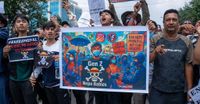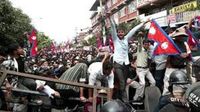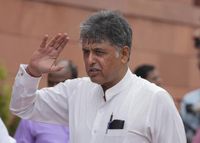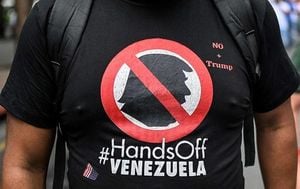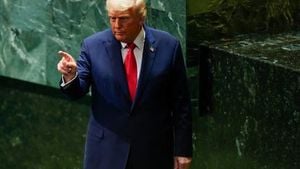On September 8, 2025, the streets of Kathmandu erupted in a way Nepal had not witnessed in its modern history. Young demonstrators, fueled by months of mounting frustration, broke through the gates of the prime minister’s official residence in Baluwatar. For a country still learning the ropes of democracy, it was a moment that immediately etched itself into the collective memory—a red-letter day that exposed both the fragility and tenacity of Nepal’s political experiment.
What set this uprising apart wasn’t just the scale of unrest, but the grammar of its resistance. According to 360info, protesters held up school textbooks—an unmistakable symbol of their disillusionment with a system that rewarded nepotism over merit. Their banners and memes, inspired by the anime "One Piece," became viral emblems of a generation’s refusal to accept exclusion as a given. The demonstrations, leaderless by design, made it clear: the old ways of elite capture and patronage politics were no longer tolerable.
Yet, the spark that ignited the powder keg was a government order blacking out dozens of social media platforms, purportedly for regulatory compliance. As The Asian Age’s Ruchira Gupta observed, “For them, the shutdown didn’t seem boring regulatory housekeeping. It spelt censorship.” In a country where digital spaces had become the new civic squares, this blackout was seen as an affront to basic freedoms. Young Nepalis, already seething over corruption and inequality, took to Discord servers, encrypted chats, and Instagram Lives to organize—replacing the mimeographed flyers of earlier generations with the tools of their own era.
But the movement’s digital savvy was only part of the story. As students poured into the streets, the government’s response was swift and severe. Live ammunition was fired at unarmed protesters, turning unrest into a full-scale uprising and shattering any remaining vestiges of state legitimacy. The death toll from the clashes was grievous, and calls for independent investigations and rapid, dignified compensation for victims’ families echoed across the nation.
By the second day, the protests risked being hijacked. Royalist and religious nationalist groups, some wielding saffron flags and chanting for a return to monarchy, infiltrated the demonstrations. Indian media headlines speculated about a new Hindu kingdom, but the core of Nepal’s youth movement was clear-eyed: they wanted accountability, not a restoration of the crown. As Gupta reported, “They marched against impunity, not for a monarch.”
Amid the chaos, Nepal’s democratic muscle memory kicked in. Elders who had once fought for the republic—some battered, all stubborn—stepped in to prevent a palace restoration from riding the wave of unrest. The President refused to abandon the republic, and, in a remarkable show of civic innovation, student moderators polled their peers to surface a non-controversial caretaker. The result: Sushila Karki, a former Chief Justice renowned for her incorruptibility, was appointed as interim Prime Minister. “Ms Karki’s appointment as interim PM isn’t the end of the story. But it is a declaration of intent: elections will be under the constitution, not a crown,” Gupta wrote.
None of this, however, erased Nepal’s deeper vulnerabilities. Landlocked and dependent on cross-border supply lines, the country still bears scars from the 2015-16 shortages that followed tensions with India. When information and commerce are both constricted, it’s the poor who suffer first and longest. The platform blackout—intended as a regulatory move—ended up highlighting how blunt instruments can backfire in fragile democracies. As Gupta cautioned, “Platform governance in small states must be precise, proportionate and grounded in due process, not spectacle.”
The uprising in Nepal is not an isolated phenomenon. Across South Asia, youth-led movements have shaken the political order. In Sri Lanka, 2022 saw protest rallies force President Gotabaya Rajapaksa to resign after economic collapse and rampant elite dominance. The "Gota Go Gama" encampment in Colombo became a symbol of resistance, blending protest theater, memes, music, and art into a new language of dissent. In Bangladesh, 2024 student protests initially targeted corruption and job shortages but quickly morphed into a broader rejection of authoritarianism under Sheikh Hasina’s prolonged rule. Online campaigns, memes, and global youth culture played a central role there as well.
What connects these uprisings isn’t ideology, but a shared sense of structural exclusion. In Nepal, Sri Lanka, and Bangladesh, the current generation of young adults inherited economies where opportunities are often secured through elite connections or family networks. The formal job market is scant, and politics feels like a closed game of patronage. As 360info noted, “Politics became a patronage game after the traditional parties destroyed themselves.” In this environment, education—once a promise of mobility—becomes a breeding ground for rebellion when it leads only to frustration.
The danger, of course, is that revolutions can create voids. If institutions aren’t built to channel popular discontent into lasting reform, the forces that young people oppose—whether authoritarian parties or old elites—can quickly return. Nepal’s own history since the 1990s is a cautionary tale: every major political shift promised inclusion, only to see elite dominance resurface. The 2011 Egyptian revolution stands as an international warning, where hope was dashed when the military retained control and the state apparatus remained unchanged.
Still, the energy of Nepal’s youth movement is undeniable. Their demand is simple but profound: rules for everyone, especially those who write them. The appointment of Sushila Karki, a judge known for refusing to bend, is a powerful signal. As Gupta put it, “They chose a woman who made her name by refusing to bend, including when it would have been easier to close her eyes. That choice says something profound about the country’s civic instincts.”
Yet, the path ahead is fraught. The interim government must deliver truth for the dead, dignity for the living, and a fair fight at the ballot box. Any lag in justice or credibility could tempt the worst actors back into the breach. The challenge for Nepal—and for its neighbors—is to move beyond ritual elections and patronage, and to build institutions that genuinely serve the people. As 360info concluded, “Old regimes may be overthrown by revolutions, but only institutions can guarantee that the hopes of a new generation won’t be let down again.”
Nepal’s September uprising stands as both a national drama and a regional mirror. It’s a story of a generation that refuses to accept exclusion, of a democracy tested but not broken, and of a small country reminding the world that the hardest part of freedom is not seizing it, but keeping it clean.
